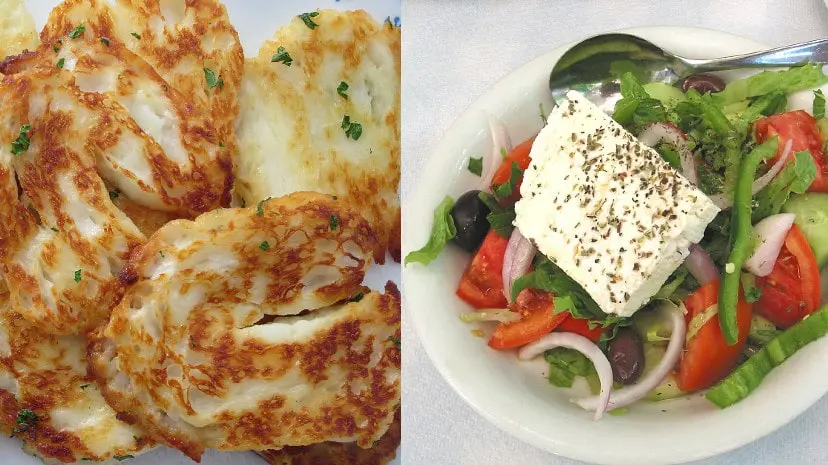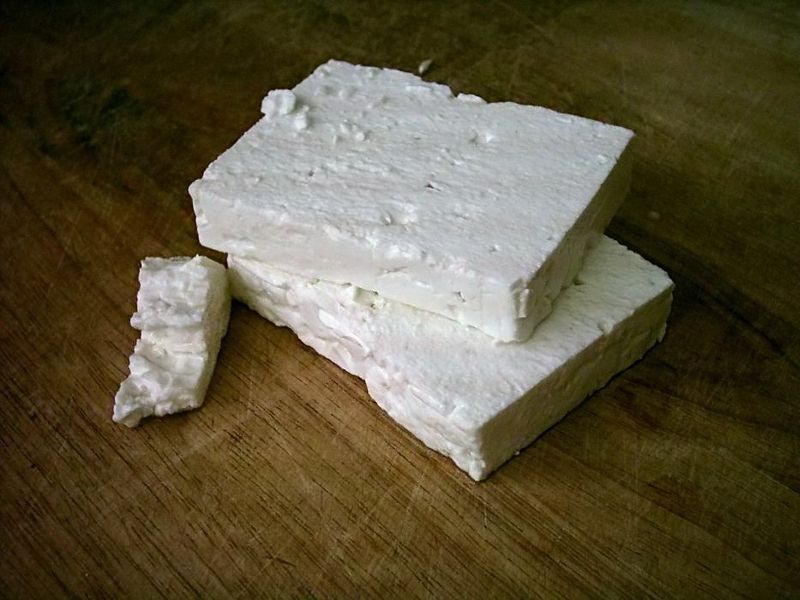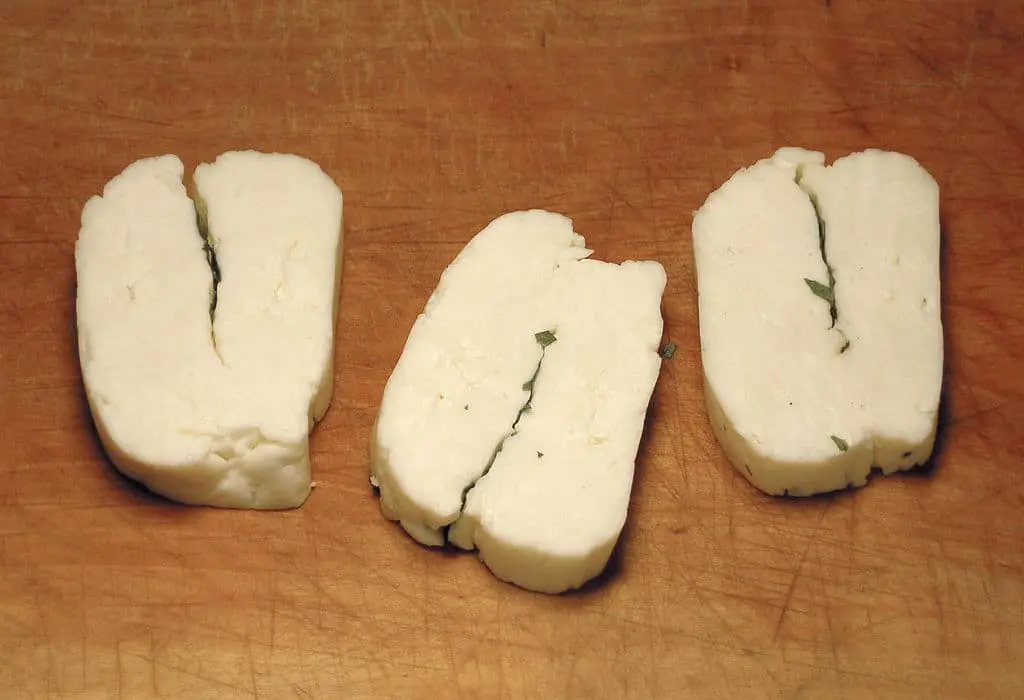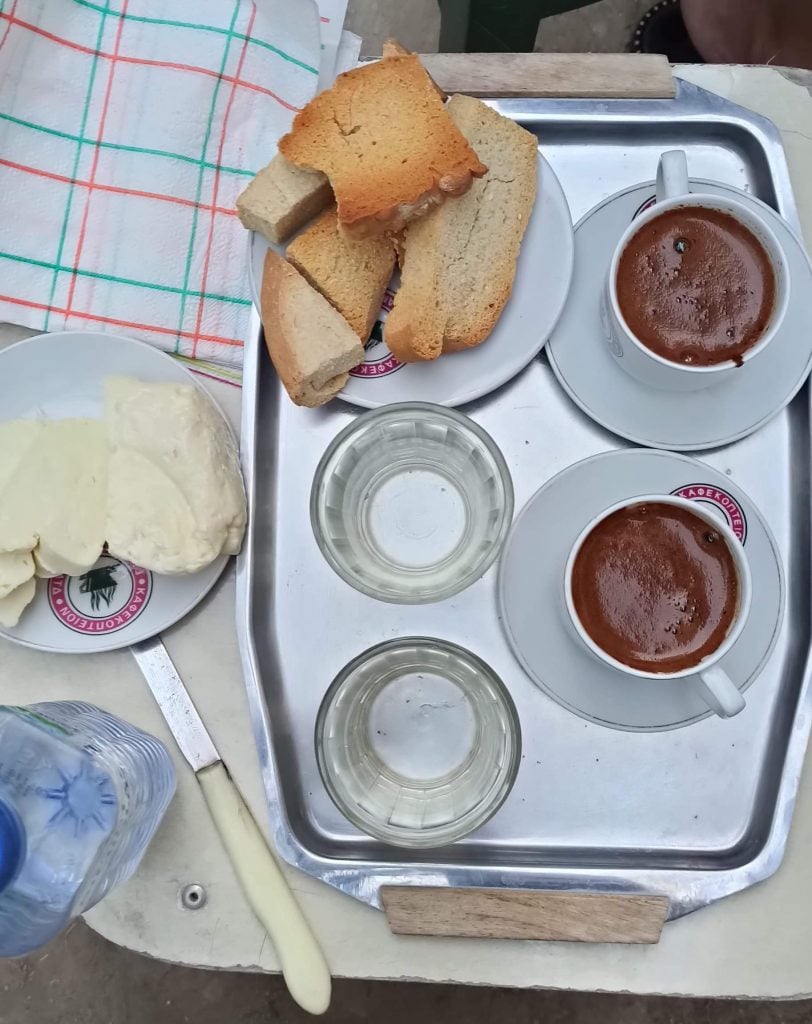
Halloumi and Feta may just be the most iconic food products from their respective countries of origin, Cyprus and Greece. Extremely popular and highly sought after internationally, these cheeses have become gourmet around the world.
While many have tasted these delicious dairy products, they may not know their fascinating history and important cultural status.
Cheese-making is an ancient practice in the Mediterranean, with the production of cheese from goat’s or sheep’s milk dating back to the 8th century BCE in Greece.
This history is accompanied by ancient myths about cheese production, including one in which Apollo’s son Aristaios, raised by nymphs, teaches mankind the art of preparing milk for cheese production.
A cheese resembling feta is mentioned in Homer‘s Odyssey. In the ancient work, the Cyclops Polyphemus is described as a shepherd who lives with a cave full of cheese and milk taken from his flock.

Feta: The iconic Greek cheese
Feta, in the form we know it as today, was first mentioned during the Byzantine era. Similarly, halloumi originated in Cyprus during the Medieval Byzantine period. The tasty Cypriot cheese later spread to its Levantine neighbors, who now have cheeses similar to halloumi in their own cuisines.
Most often, both feta and halloumi are made from a mixture of sheep’s and goat’s milk, but there are variations in production. Feta can be made either with only sheep’s milk or only goat’s milk, and sometimes halloumi includes cow’s milk in the mixture.
Any way they’re made, authentic feta and halloumi are delicious.

Feta is a crumbly, soft white cheese with a tangy flavor. It is created by placing the curdled milk mixture into wooden barrels. The curdled mixture is very compact, and must be sliced in order to fit into the barrels. The name feta, Greek for slice, most likely comes from this practice.
After sitting in the barrels for a few days, the cheese curds are placed in brine, a salty water solution, which is essential in creating the cheese’s iconic flavor. That’s why your feta is floating in liquid when you buy it in the supermarket!
Feta is used in many Greek dishes, but most notably in the Greek salad, or horiatiki, and baked goods such as spanakopita and tyropita. Because of its popularity, feta is now used throughout the world in many dishes.

Halloumi, a Cypriot delight
Halloumi is made by heating cheese curds from the sheep’s and goat’s milk mixture, and then placing them in brine. Traditionally, mint is used in the production of the cheese, adding a hint of minty flavor to the cheese.
In the West, a softer, milder version of halloumi is preferred. This type of halloumi has not been aged in brine, making it less tangy. In Cyprus, many prefer the aged version, which is more tough and has a stronger flavor.
Halloumi has a very high melting point, owing to its method of production. This means that halloumi can be grilled or fried easily—delicious!
In Cyprus, halloumi is considered to go with everything, and is eaten all throughout the day. It is particularly popular at breakfast time, though.

Feta Vs. Halloumi
In the summertime, both Greeks and Cypriots eat their national cheeses with watermelon, a refreshing snack that is both salty and sweet.
Feta is considered a Protected Designation of Origin (PDO) product by the European Union, which means that only cheese produced in Greece under traditional methods can be labeled feta.
As of October 1, 2021, halloumi has also gained the same PDO status.
After a seven-year-long battle between the cheese and the bureaucracy of the EU, halloumi is now able to proudly display the PDO as a bona fide product of Cyprus.
This means that the cheese can only be produced in Cyprus. Until then, imitators have been legally able to produce halloumi and market it using that word.
In the battle between halloumi and feta, its impossible to choose a winner—both are delicious and full of cultural significance.
See all the latest news from Greece and the world at Greekreporter.com. Contact our newsroom to report an update or send your story, photos and videos. Follow GR on Google News and subscribe here to our daily email!



